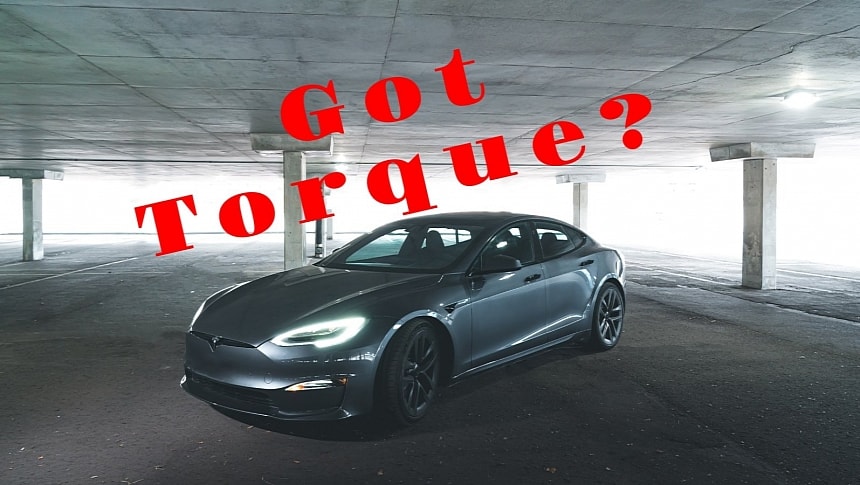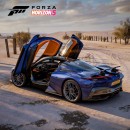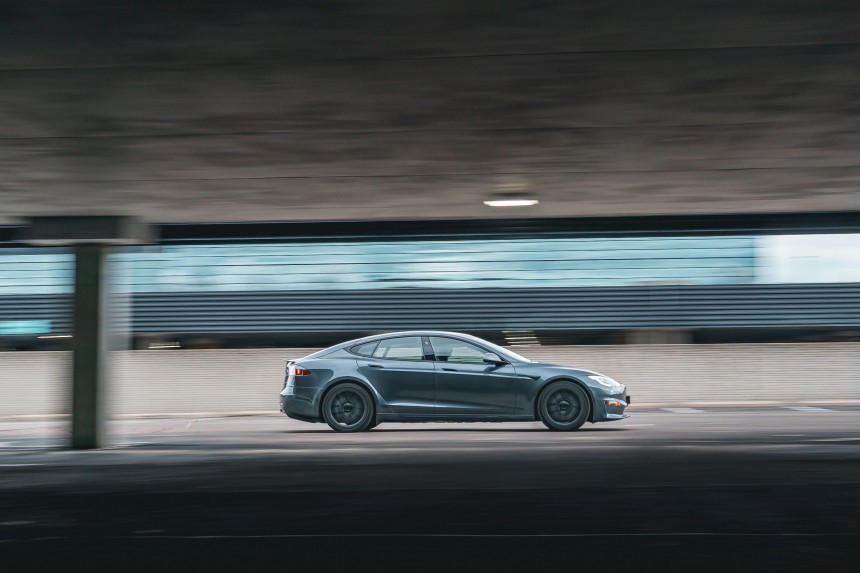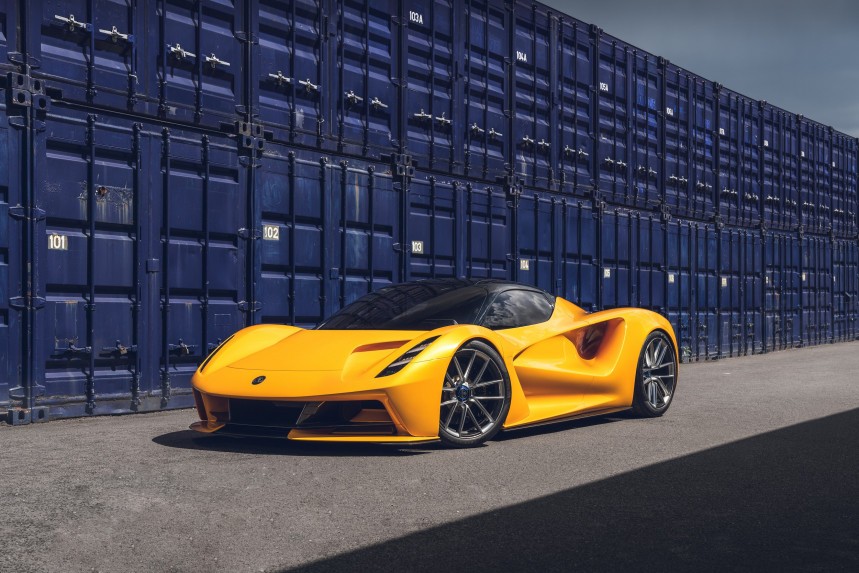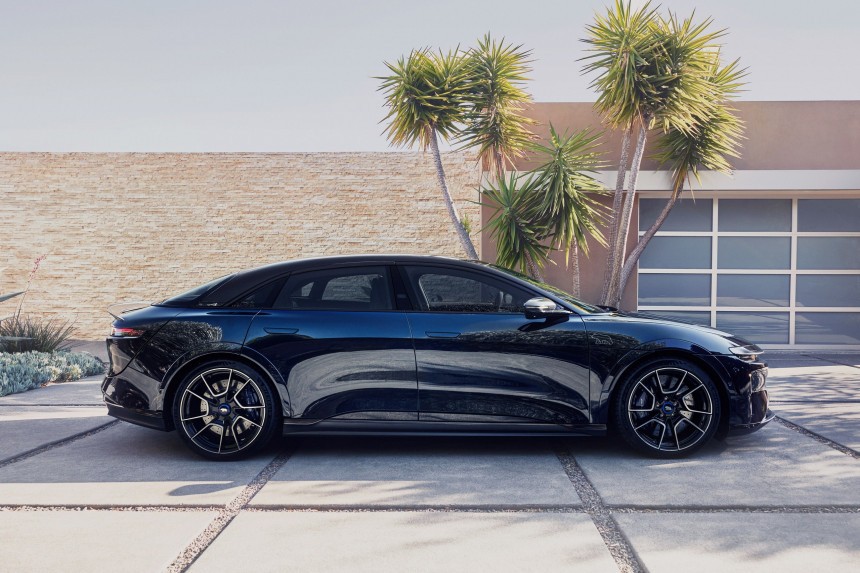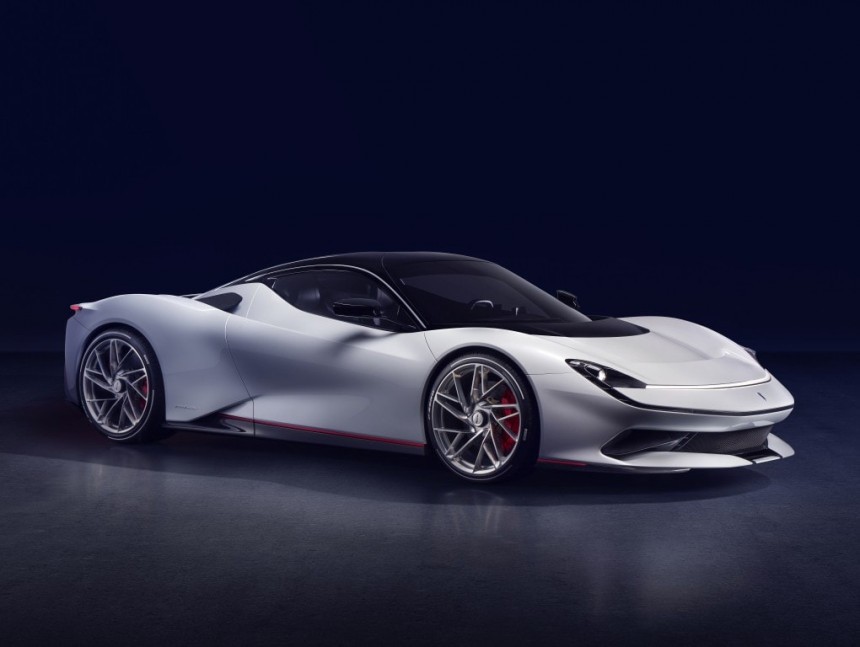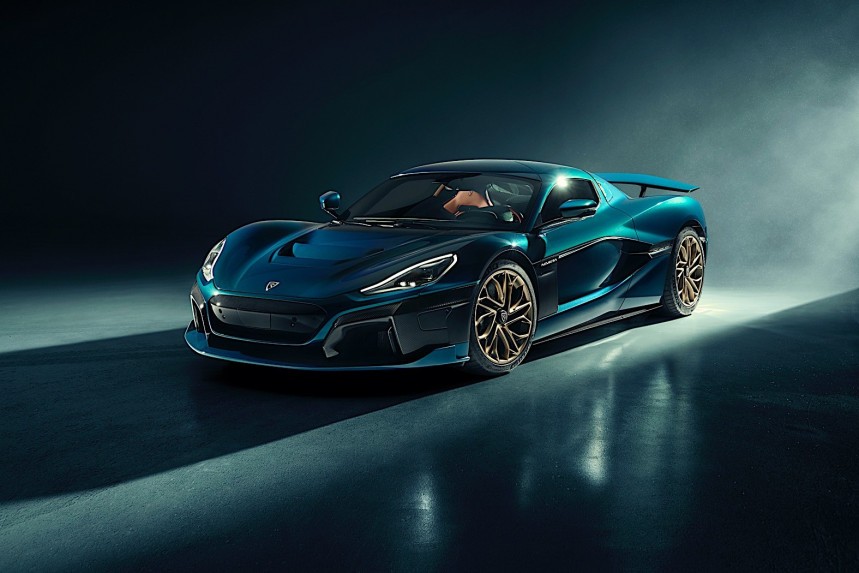There is an old adage saying that 'horsepower sells cars, torque wins races.' No, it wasn't said by a truck driver but by Carroll Shelby himself. As true as that saying is, torque doesn't do much winning by itself, nor does horsepower. In other words, you can't have one without the other and expect incredible performance from a car simultaneously.
As it happens, all the production cars on the following list have both phenomenal torque figures and horsepower. That said, the torque made them part of this exclusive club in the first place.
Before I continue, I'm positive not everyone is entirely familiar with the concept of engine torque, or twist, as it is also sometimes called, and why it is so important.
Despite usually being overshadowed by the concept of horsepower in most automotive talks, torque is a pretty fundamental criterion by which one can measure a vehicle's performance and driving feel. In layperson's terms, torque, or twist, is measuring the rotational force that an engine or electric motor generates to turn the wheels and propel a vehicle forward.
Typically measured in pound-feet (lb-ft) in the U.S. or Britain and Newton-Meters (Nm) on the Old Continent, it represents the force applied at a distance from a pivot point. To put it in perspective, imagine you are loosening a tight bolt with a wrench or changing your wheels. The force you apply to the handle of the wrench to rotate it around the bolt is similar to how the concept of torque applies to a car.
In other words, it is directly responsible for the push you feel when you accelerate a vehicle, while the speed you can attain is influenced exclusively by horsepower in this context. To illustrate this point, I'm not going to include variables like gearing or a powertrain's torque curve, which can differ massively, but the main idea remains: torque is what moves you, and horsepower helps you reach a high speed.
With that in mind, this force measurement has never sounded as romantic as 'horsepower,' at least until the second decade of the 21st century.
That is when most sports cars and supercars reignited their love of extra boost, first with turbochargers and then by becoming hybrids. The hybrid part was only a stepping stone for fully electric supercars, now available in multiple shapes and segments.
One of the main selling points for the best-selling electric cars in recent years, Teslas, was their natural tendency to annihilate completely traditional performance cars in drag races, and that was thanks to the amount of torque their electric motors can develop.
That said, the evolution of electric cars has taken us to a paradigm shift regarding straight-line performance, where torque is no longer something in the background but the main point of discussion.
Why is torque important, you ask? The short answer is that it influences a vehicle's performance, efficiency, and capability. The slightly longer one will help you appreciate what makes a car responsive to acceleration, capable of towing things and climbing hills, and last but not least, its energy efficiency, whether an internal combustion engine or an electric motor powers it.
Without further ado, I've compiled a list of the torquiest electric cars in production in 2024, and somewhat surprisingly, only three of them adhere to the traditional definition of a supercar. In other words, we've hit the torque mother lode thanks to electricity.
In recent years, the Model S in Plaid spec has been the poster child of crushing dreams on the drag strip with what is essentially a family sedan. Yes, it has looked quick since its introduction over a decade ago, but the Plaid version has taken things to an entirely new level.
It is named 'Plaid' as an homage to the movie Spaceballs, where it signified a speed faster than light and faster than 'Ludicrous,' which is yet another high-speed driving mode for Teslas.
Introduced in June 2021, it has a revised suspension, braking system, and powertrain, which comes with three electric motors as opposed to the 'regular' Model S, which only features two.
While the standard Tesla Model S had more than enough torque, the Plaid gets no less than 1,050 lb-ft (1,420 Nm), which made it the quickest accelerating production car in history when it went on sale three years ago.
With a quarter-mile (402 m) time of under 10 seconds on prepped or even unprepared surfaces, it's no wonder YouTube has quickly flooded with Teslas 'destroying' all kinds of supercars on the drag strip.
Encapsulating the potential of electric vehicles to outperform their gasoline counterparts in nearly every metric when it comes to acceleration, both from a standstill and at high speeds, its only major letdown has been the braking package, which is simply undersized for such a sporty car.
Some may argue that the overheating issues for the battery after multiple drag races are also huge issues. Still, from personal experience, it is not only Teslas's problem in this day and age.
Even taking that into account, the Tesla Model S Plaid was a game-changer for the industry and has since kickstarted a race for even more ludicrous, pun intended, EV creations regarding performance and especially torque.
The Evija is the first Lotus developed with new majority shareholder Geely, spearheading a new direction for the so-far traditional sports carmaker, which will soon transition to an all-electric lineup.
As another first, the British hypercar is also the most powerful production car in history, besting even the Bugatti Chiron, at least until the V8 version of the Koenigsegg Gemera arrives in select air-conditioned garages in late 2024.
A tour de force regarding performance, the Lotus Evija can allegedly go from 0 to 186 mph (300 kph) in just 9.1 seconds, and achieve a limited top speed of 217 mph (349 kph). Responsible for those numbers are not two, not three, but four electric motors, comprising a combined output of no less than 2,012 HP (2,039 PS).
Taking their charge from a 70 kWh battery developed with Williams Engineering, the four electric motors have another trick up their sleeve in the form of the combined torque output.
A mind-bogglingly 1,704 Nm (1,257 lb-ft) of torque is actually the main force, pun intended, responsible for accelerating the first-ever British EV hypercar in a way that will probably put a lot of strain on the necks of its owners.
Its name is derived from Eve of the Abrahamic religions, continuing the Lotus tradition of cars whose nomenclature starts with the letter 'E.' While its production was delayed several times, it looks like 2024 is the year when it will finally arrive to its wealthy, hand-picked customers, of which only 130 will ever exist.
Hot on the heels of Tesla in its quest to become yet another American EV maker success story, Lucid has been making the Air luxury sedan as high tech as it can. Designed from the get-go to compete with the Tesla Model S in terms of performance and comfort, but with German luxury sedans in terms of luxury and pricing, the Lucid Air is the most expensive American EV sedan.
Pricing starts at a Model S-beating 70k but can quickly go to no less than a quarter of a million $ if you go for a fully loaded Air Sapphire, which puts it way over into Porsche Taycan Turbo S territory.
Do you know what else puts the Sapphire beyond Porsche and Tesla territory? Performance, and plenty of it. As the only Air to get a three-motor setup, the top-of-the-range version officially gets from 0 to 60 mph (97 kph) in a mind-boggling 1.89 seconds and does the quarter mile (402 m) in a smidge over 9 seconds at over 155 mph (250 kph).
The main culprit for those spectacular numbers is another number, representing the amount of torque developed by those three motors. If you thought the Tesla Model S Plaid was otherworldly regarding twist, the Lucid Air Sapphire makes do with no less than 1,430 lb-ft (1,939 Nm).
Putting things into perspective, an 18-wheeler has between 1,000 to 2,000 lb-ft (1,356 Nm to 2,711 Nm) of torque, and a luxury sports sedan has managed to go right in the middle of those numbers with its output.
The craziest thing is that it only goes in third place on the list of the torquiest production EVs you can buy today, and in a couple of years, it might not even make the top 5 with the way things are going.
It wouldn't be so far-fetched as to suggest that some of the most beautiful cars in history have been designed in Italy. Even less of an exaggeration would be that most Italian beauties on four wheels proudly wear a red, white, and blue 'F' logo, which signals that the Pininfarina design house penned them.
Apart from being in charge of the design of pretty much every important Ferrari from 1951 until 2011, Pininfarina was one of the longest-lasting coachbuilders. Still, it was never known for making its own cars.
That all changed a few years ago after Mahindra acquired the brand and expanded the business by launching a new car brand called Pininfarina Automobili, which is headquartered in Germany, of all places.
The first product from the somewhat new company is an all-electric hypercar called the Battista, a tribute to Pininfarina's founder, Battista 'Pinin' Farina. While the design was obviously made in-house by the parent company, engineering was made in collaboration with Rimac.
In many ways, the Battista's technical bits are identical to those of the Rimac Nevera, which is why it's a very close second in the list of the torquiest electric cars in production.
No less than four electric motors, two per axle, develop a staggering 1,900 HP (1,927 PS) in the combined output, drawing power from a 120 kWh battery laid out in a T-shape for strength and weight distribution purposes.
If you think that's impressive but not as awe-inspiring as the output of the Lotus Evija, the torque figure will balance things in the Battista's favor. Its tires must tolerate an incredible 1,726 lb-ft (2,340 Nm) of torque whenever you push the go-fast pedal.
Considering this is an electric car, that torque is available instantly from zero rpm, so hopefully, Rimac's engineers have calibrated a clever anti-skid system in Pininfarina's first-ever production car and the most powerful Italian production car in history.
Croatia had never been on the automotive map of the world until 2009 when Rimac Automobili was established as an evolution of its founder, Mate Rimac, EV garage hobby. Unlike most boutique supercar makers, Rimac developed all of its engineering parts in-house, patenting dozens of innovations in the process.
Fast-forward about a decade and numerous collaborations with other brands, including Pininfarina, as mentioned earlier, and Rimac now sits under the Bugatti Rimac joint company. No, it wasn't bought by Bugatti or the Volkswagen Group, as Rimac owns a 55 percent stake in the joint venture, with the other 45 percent being owned by Porsche, a frequent collaborator.
The Bugatti connection is not so far-fetched, as while the French carmaker was known for making the torquiest ICE-powered cars, Rimac is now known for making the torquiest electric car on the planet, the Nevera.
Almost identical mechanically to the Pininfarina Battista in second place, the Rimac Nevera develops a bit less power but slightly more twist, with its four motors delivering a tire-torturing 1,741 lb-ft (2,360 Nm) of torque.
Apart from making it the production car with the most torque in history, that output is also responsible for making the Nevera the quickest road-going car ever. And those are not empty marketing words, as the model's testing established no less than 22 independently verified performance world records.
Thanks to the true torque vectoring infused by the four electric motors, the model is also the quickest production EV on the Nurburgring, so torque is better for things other than towing, after all.
Before I continue, I'm positive not everyone is entirely familiar with the concept of engine torque, or twist, as it is also sometimes called, and why it is so important.
Despite usually being overshadowed by the concept of horsepower in most automotive talks, torque is a pretty fundamental criterion by which one can measure a vehicle's performance and driving feel. In layperson's terms, torque, or twist, is measuring the rotational force that an engine or electric motor generates to turn the wheels and propel a vehicle forward.
Typically measured in pound-feet (lb-ft) in the U.S. or Britain and Newton-Meters (Nm) on the Old Continent, it represents the force applied at a distance from a pivot point. To put it in perspective, imagine you are loosening a tight bolt with a wrench or changing your wheels. The force you apply to the handle of the wrench to rotate it around the bolt is similar to how the concept of torque applies to a car.
In other words, it is directly responsible for the push you feel when you accelerate a vehicle, while the speed you can attain is influenced exclusively by horsepower in this context. To illustrate this point, I'm not going to include variables like gearing or a powertrain's torque curve, which can differ massively, but the main idea remains: torque is what moves you, and horsepower helps you reach a high speed.
With that in mind, this force measurement has never sounded as romantic as 'horsepower,' at least until the second decade of the 21st century.
That is when most sports cars and supercars reignited their love of extra boost, first with turbochargers and then by becoming hybrids. The hybrid part was only a stepping stone for fully electric supercars, now available in multiple shapes and segments.
One of the main selling points for the best-selling electric cars in recent years, Teslas, was their natural tendency to annihilate completely traditional performance cars in drag races, and that was thanks to the amount of torque their electric motors can develop.
That said, the evolution of electric cars has taken us to a paradigm shift regarding straight-line performance, where torque is no longer something in the background but the main point of discussion.
Why is torque important, you ask? The short answer is that it influences a vehicle's performance, efficiency, and capability. The slightly longer one will help you appreciate what makes a car responsive to acceleration, capable of towing things and climbing hills, and last but not least, its energy efficiency, whether an internal combustion engine or an electric motor powers it.
Without further ado, I've compiled a list of the torquiest electric cars in production in 2024, and somewhat surprisingly, only three of them adhere to the traditional definition of a supercar. In other words, we've hit the torque mother lode thanks to electricity.
Tesla Model S Plaid: 1,050 lb-ft (1,420 Nm)
It is named 'Plaid' as an homage to the movie Spaceballs, where it signified a speed faster than light and faster than 'Ludicrous,' which is yet another high-speed driving mode for Teslas.
Introduced in June 2021, it has a revised suspension, braking system, and powertrain, which comes with three electric motors as opposed to the 'regular' Model S, which only features two.
While the standard Tesla Model S had more than enough torque, the Plaid gets no less than 1,050 lb-ft (1,420 Nm), which made it the quickest accelerating production car in history when it went on sale three years ago.
With a quarter-mile (402 m) time of under 10 seconds on prepped or even unprepared surfaces, it's no wonder YouTube has quickly flooded with Teslas 'destroying' all kinds of supercars on the drag strip.
Encapsulating the potential of electric vehicles to outperform their gasoline counterparts in nearly every metric when it comes to acceleration, both from a standstill and at high speeds, its only major letdown has been the braking package, which is simply undersized for such a sporty car.
Some may argue that the overheating issues for the battery after multiple drag races are also huge issues. Still, from personal experience, it is not only Teslas's problem in this day and age.
Even taking that into account, the Tesla Model S Plaid was a game-changer for the industry and has since kickstarted a race for even more ludicrous, pun intended, EV creations regarding performance and especially torque.
Lotus Evija: 1,257 lb-ft (1,704 Nm)
As another first, the British hypercar is also the most powerful production car in history, besting even the Bugatti Chiron, at least until the V8 version of the Koenigsegg Gemera arrives in select air-conditioned garages in late 2024.
A tour de force regarding performance, the Lotus Evija can allegedly go from 0 to 186 mph (300 kph) in just 9.1 seconds, and achieve a limited top speed of 217 mph (349 kph). Responsible for those numbers are not two, not three, but four electric motors, comprising a combined output of no less than 2,012 HP (2,039 PS).
Taking their charge from a 70 kWh battery developed with Williams Engineering, the four electric motors have another trick up their sleeve in the form of the combined torque output.
A mind-bogglingly 1,704 Nm (1,257 lb-ft) of torque is actually the main force, pun intended, responsible for accelerating the first-ever British EV hypercar in a way that will probably put a lot of strain on the necks of its owners.
Its name is derived from Eve of the Abrahamic religions, continuing the Lotus tradition of cars whose nomenclature starts with the letter 'E.' While its production was delayed several times, it looks like 2024 is the year when it will finally arrive to its wealthy, hand-picked customers, of which only 130 will ever exist.
Lucid Air Sapphire: 1,430 lb-ft (1,939 Nm)
Pricing starts at a Model S-beating 70k but can quickly go to no less than a quarter of a million $ if you go for a fully loaded Air Sapphire, which puts it way over into Porsche Taycan Turbo S territory.
Do you know what else puts the Sapphire beyond Porsche and Tesla territory? Performance, and plenty of it. As the only Air to get a three-motor setup, the top-of-the-range version officially gets from 0 to 60 mph (97 kph) in a mind-boggling 1.89 seconds and does the quarter mile (402 m) in a smidge over 9 seconds at over 155 mph (250 kph).
The main culprit for those spectacular numbers is another number, representing the amount of torque developed by those three motors. If you thought the Tesla Model S Plaid was otherworldly regarding twist, the Lucid Air Sapphire makes do with no less than 1,430 lb-ft (1,939 Nm).
Putting things into perspective, an 18-wheeler has between 1,000 to 2,000 lb-ft (1,356 Nm to 2,711 Nm) of torque, and a luxury sports sedan has managed to go right in the middle of those numbers with its output.
The craziest thing is that it only goes in third place on the list of the torquiest production EVs you can buy today, and in a couple of years, it might not even make the top 5 with the way things are going.
Pininfarina Battista: 1,726 lb-ft (2,340 Nm)
Apart from being in charge of the design of pretty much every important Ferrari from 1951 until 2011, Pininfarina was one of the longest-lasting coachbuilders. Still, it was never known for making its own cars.
That all changed a few years ago after Mahindra acquired the brand and expanded the business by launching a new car brand called Pininfarina Automobili, which is headquartered in Germany, of all places.
The first product from the somewhat new company is an all-electric hypercar called the Battista, a tribute to Pininfarina's founder, Battista 'Pinin' Farina. While the design was obviously made in-house by the parent company, engineering was made in collaboration with Rimac.
In many ways, the Battista's technical bits are identical to those of the Rimac Nevera, which is why it's a very close second in the list of the torquiest electric cars in production.
No less than four electric motors, two per axle, develop a staggering 1,900 HP (1,927 PS) in the combined output, drawing power from a 120 kWh battery laid out in a T-shape for strength and weight distribution purposes.
If you think that's impressive but not as awe-inspiring as the output of the Lotus Evija, the torque figure will balance things in the Battista's favor. Its tires must tolerate an incredible 1,726 lb-ft (2,340 Nm) of torque whenever you push the go-fast pedal.
Considering this is an electric car, that torque is available instantly from zero rpm, so hopefully, Rimac's engineers have calibrated a clever anti-skid system in Pininfarina's first-ever production car and the most powerful Italian production car in history.
Rimac Nevera: 1,741 lb-ft (2,360 Nm)
Fast-forward about a decade and numerous collaborations with other brands, including Pininfarina, as mentioned earlier, and Rimac now sits under the Bugatti Rimac joint company. No, it wasn't bought by Bugatti or the Volkswagen Group, as Rimac owns a 55 percent stake in the joint venture, with the other 45 percent being owned by Porsche, a frequent collaborator.
The Bugatti connection is not so far-fetched, as while the French carmaker was known for making the torquiest ICE-powered cars, Rimac is now known for making the torquiest electric car on the planet, the Nevera.
Almost identical mechanically to the Pininfarina Battista in second place, the Rimac Nevera develops a bit less power but slightly more twist, with its four motors delivering a tire-torturing 1,741 lb-ft (2,360 Nm) of torque.
Apart from making it the production car with the most torque in history, that output is also responsible for making the Nevera the quickest road-going car ever. And those are not empty marketing words, as the model's testing established no less than 22 independently verified performance world records.
Thanks to the true torque vectoring infused by the four electric motors, the model is also the quickest production EV on the Nurburgring, so torque is better for things other than towing, after all.
